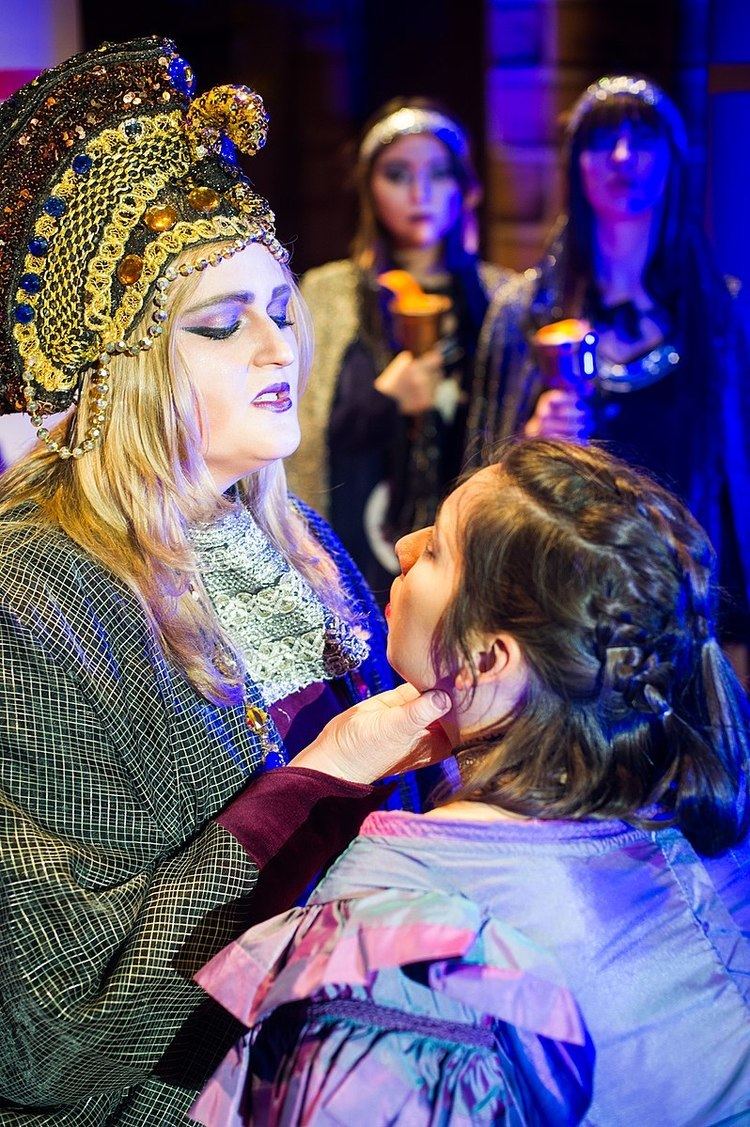 | ||
"Der Hölle Rache kocht in meinem Herzen" ("Hell's vengeance boils in my heart"), commonly abbreviated "Der Hölle Rache", is an aria sung by the Queen of the Night, a coloratura soprano part, in the second act of Mozart's opera The Magic Flute (Die Zauberflöte). It depicts a fit of vengeful rage in which the Queen of the Night places a knife into the hand of her daughter Pamina and exhorts her to assassinate Sarastro, the Queen's rival, on pain of denying and cursing Pamina if she does not comply.
Contents
"Der Hölle Rache" is one of the most famous of all opera arias, memorable, fast paced and menacingly grandiose. It is often referred to as the "Queen of the Night's Aria"' despite the fact that the Queen sings another distinguished aria earlier in the opera, "O zittre nicht, mein lieber Sohn".
Libretto
The words were written by Emanuel Schikaneder, who also authored the rest of the Magic Flute libretto, headed the theater troupe that premiered the work, and created the role of Papageno.
Metrically, the text consists of a quatrain in iambic pentameter (exceptional for this opera, which is mostly in iambic tetrameter), followed by a quatrain in iambic trimeter, then a final pentameter couplet. The rhyme scheme is [ABAB][CCCD][ED].
Music
The aria is written in D minor, and is scored for pairs of flutes, oboes, bassoons, horns, and trumpets, along with timpani and the string section. This is a larger orchestra than for "O zittre nicht" and comprises all the players from the opera as a whole, except the clarinets and trombones.
The aria is renowned as a demanding piece to perform well. The aria's vocal range covers two octaves, from F4 to F6 and requires a very high tessitura.
Bauman has expressed particular admiration for one moment in the score. At the climax of the aria, the Queen sings the words "Hört, hört, hört!" solo, in alternation with loud chords from the orchestra. The first two syllables are sung to D and F, suggesting to the listener a third one on A, completing the D minor triad. But, as Bauman writes:
Mozart's masterstroke is the transformation he brought about by moving from the third degree to the flat sixth rather than to the fifth. ... No matter how often one hears this passage ... one is led by musical logic to expect, after D and F, A. But the Queen sings a terrifying B♭ instead.
The effect is accompanied by unexpected Neapolitan harmony in the orchestra, with all the violins playing in unison high on the G string to intensify the sound.
Performance history
The first singer to perform the aria onstage was Mozart's sister-in-law Josepha Hofer, who at the time was 32. By all accounts, Hofer had an extraordinary upper register and an agile voice and apparently Mozart, being familiar with Hofer's vocal ability, wrote the two blockbuster arias to showcase it.
An anecdote from Mozart's time suggests that the composer himself was very impressed with his sister-in-law's performance. The story comes from an 1840 letter from composer Ignaz von Seyfried, and relates an event from the last night of Mozart's life—December 4, 1791, five weeks into the opera's initial (very successful) run. According to Seyfried, the dying Mozart whispered the following to his wife Constanze:
Quiet, quiet! Hofer is just taking her top F; – now my sister-in-law is singing her second aria, 'Der Hölle Rache'; how strongly she strikes and holds the B-flat: 'Hört! hört! hört! der Mutter Schwur!'"
In modern times a great number of notable sopranos have performed or recorded the aria. June Anderson sings it in the film Amadeus. The aria was also a favorite of the famously incompetent singer Florence Foster Jenkins.
A recording of the aria by Edda Moser, accompanied by the Bavarian State Opera under the baton of Wolfgang Sawallisch, is included in a collection of music from Earth on the Voyager 1 spacecraft.
